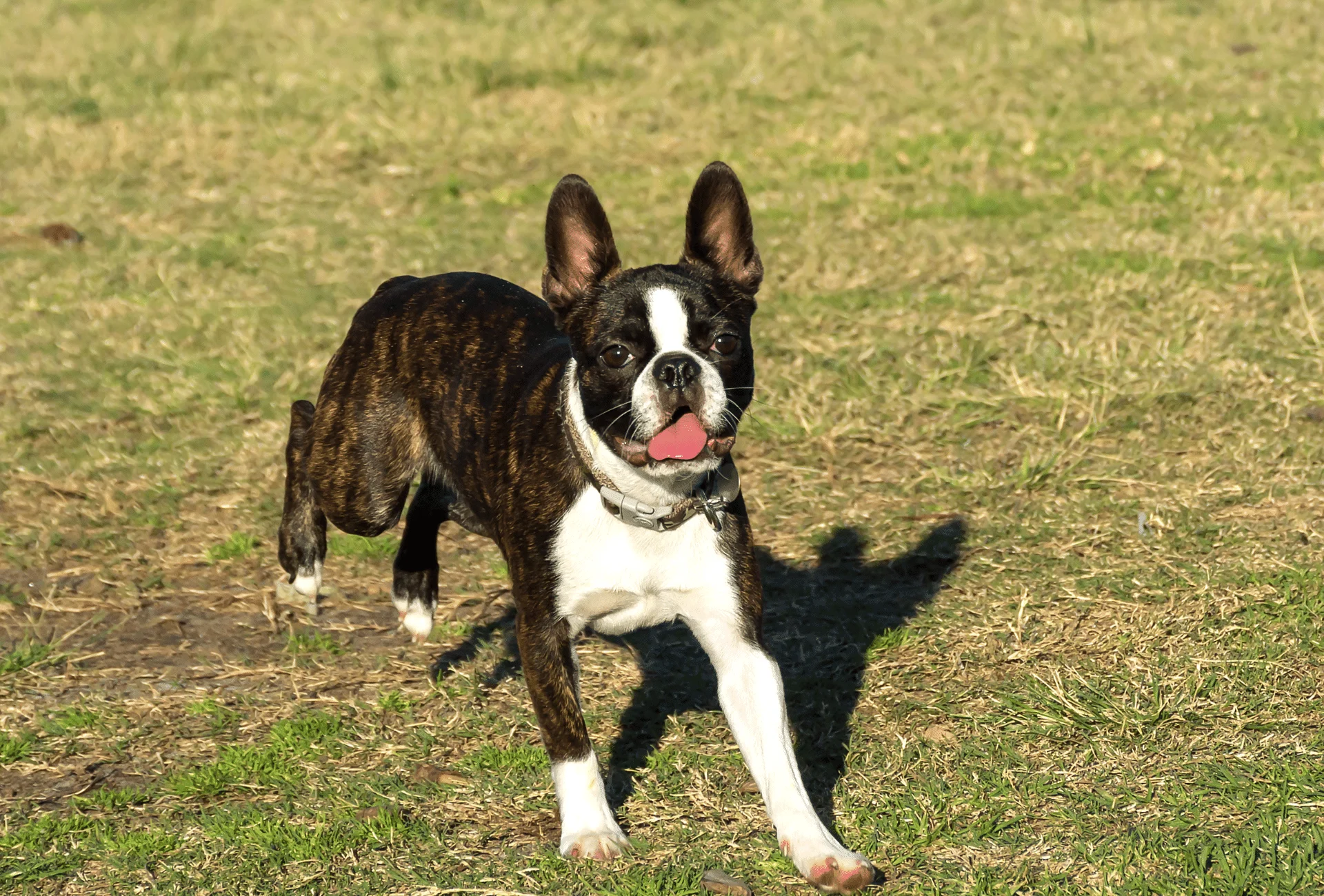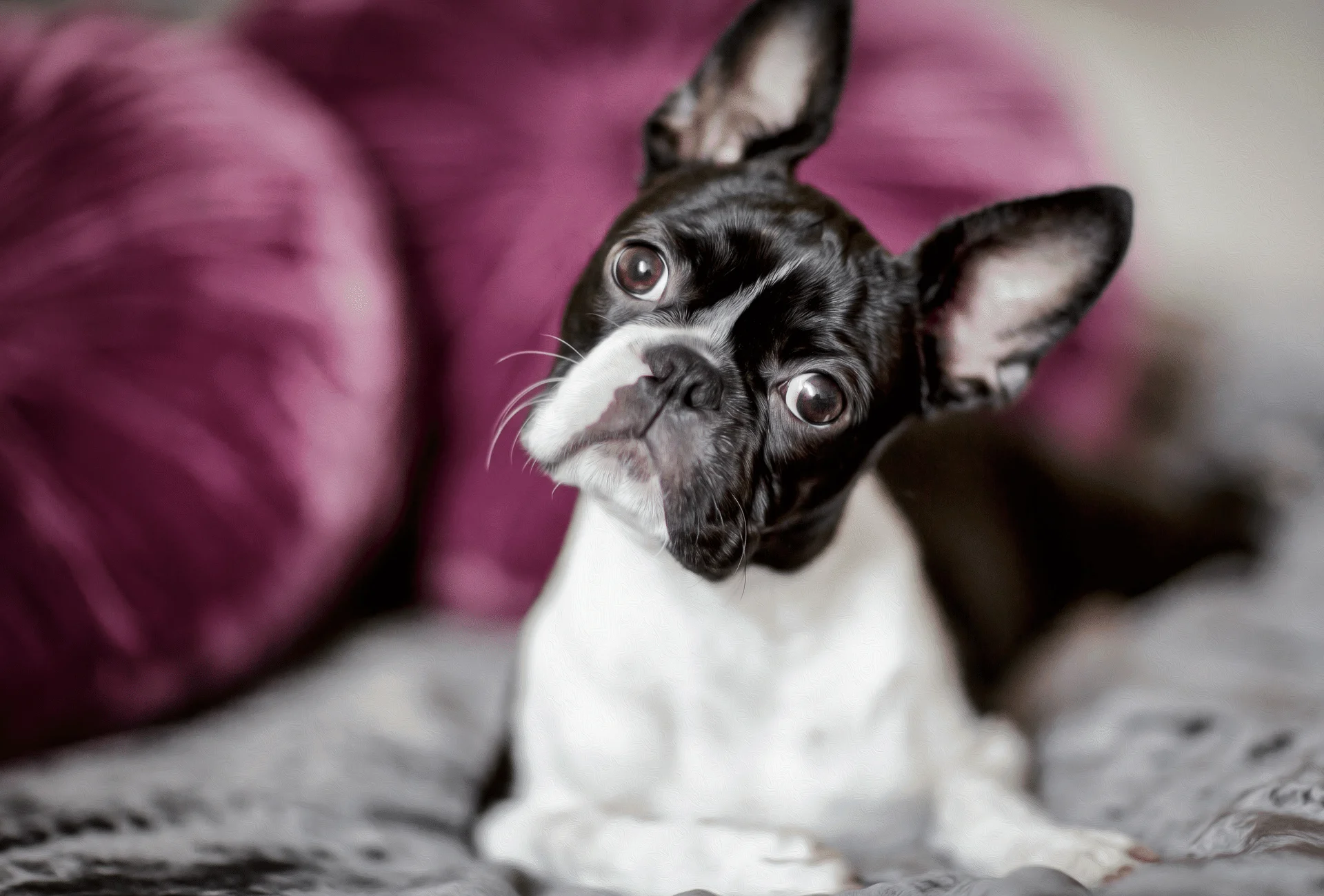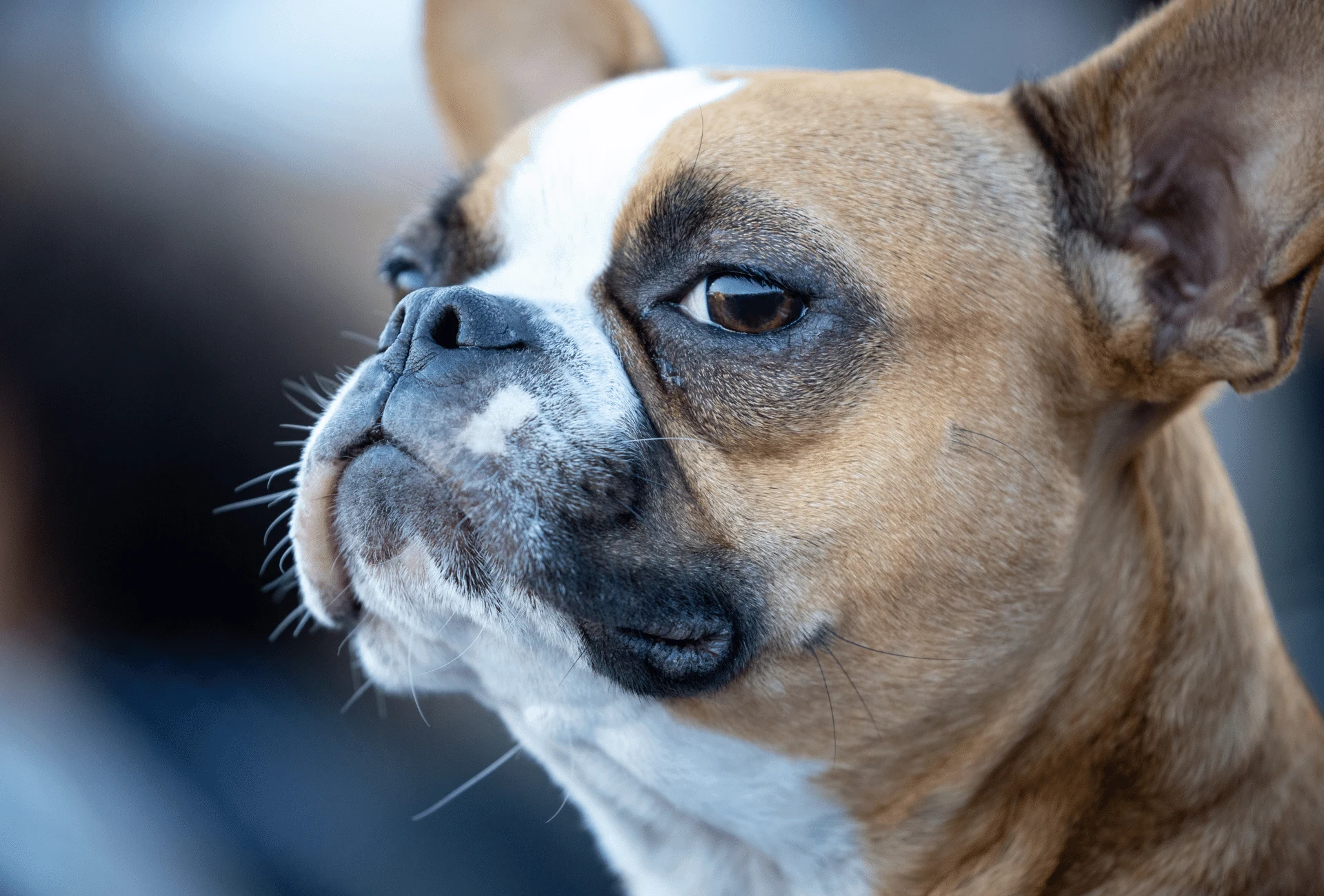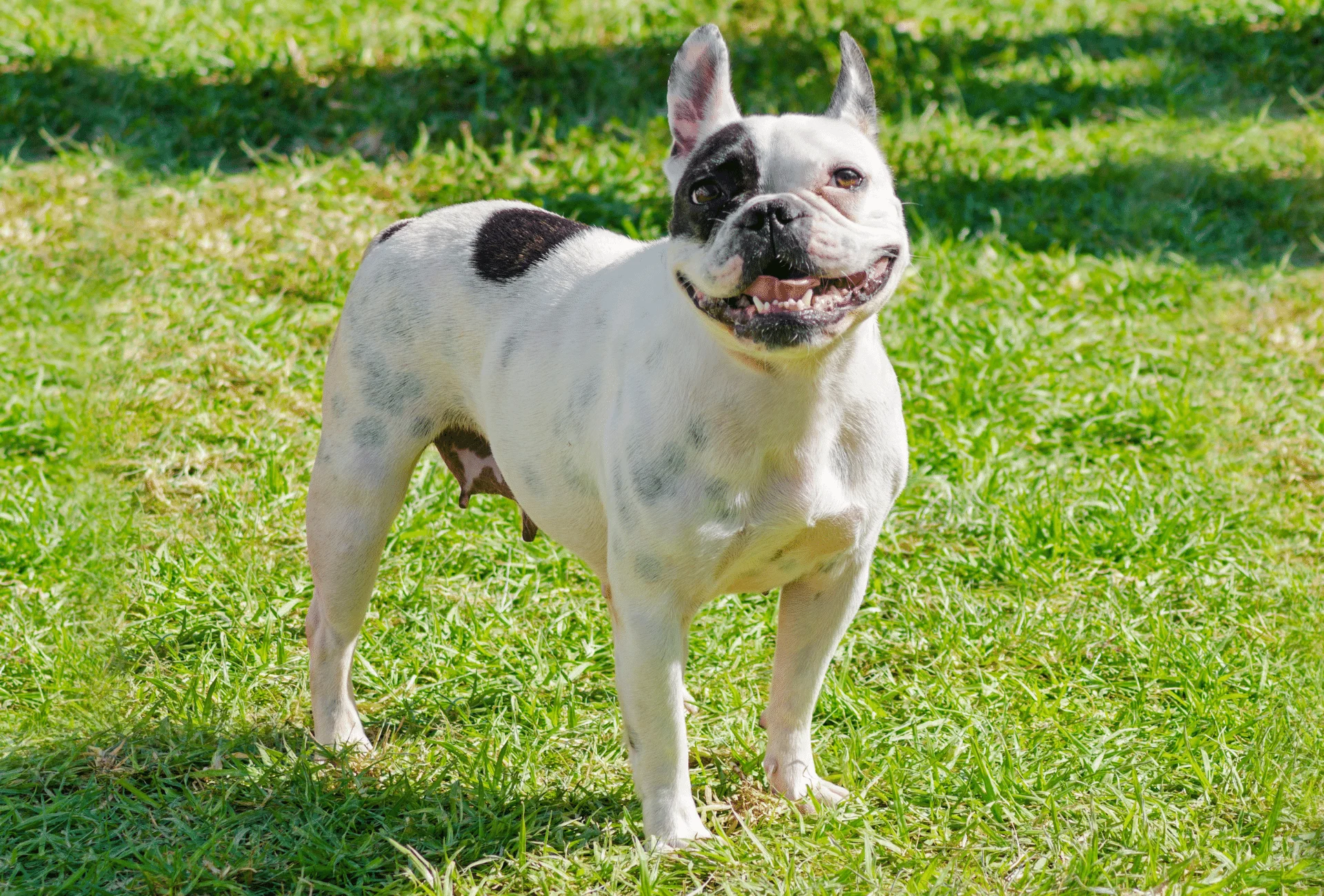You’re out to adopt a brand new pup, but just not sure what Boston Terrier color to go with.
Are only certain colors good, or are some just better than others?
You may have been told Brindle, Seal, and Black are the only true Boston Terrier colors.
And that you should probably avoid anything else since colors that aren’t included in the breed standard can represent a poor quality, sick, or otherwise unhealthy dog.
There’s definitely truth to that and with the acceptance of all these designer colors comes a wide variety of backyard breeders and puppy mills serving high demand.
If you’re buying a puppy, make sure your dog conforms to the breed standard and is health-tested.
For adoptions, it’s okay to inform yourself about possible colors and what they’re called but be aware that most are not accepted for conformation shows and are often irresponsibly bred.
The AKC states the following regarding Boston Terrier coat colors:
“The coat is short, smooth, bright and fine in texture. Brindle, seal, or black with white markings.”
-AKC Boston Terrier Breed Standard
Boston Terrier Markings
Though Boston Terrier markings might be self-explanatory to many, we’ve included descriptions of what they look like and their particularities.
White Muzzle Band
These are white markings around the muzzle, presenting a sort of white band or white strip.
White Blaze
A blaze is defined as a white stripe that runs up the center of the face, often in between the eyes.
“A dog with a preponderance of white on the head or body must possess sufficient merit otherwise to counteract its deficiencies.”
-AKC Boston Terrier Breed Standard
White Forechest
The forechest is the front portion of a dog’s chest, as opposed to his underbelly.
“Required Markings: White muzzle band, white blaze between the eyes, white forechest. Desired Markings: White muzzle band, even white blaze between the eyes and over the head, white collar, white forechest, white on part or whole of forelegs and hind legs below the hocks. (Note: A representative specimen should not be penalized for not possessing “Desired Markings.”)”
-AKC Boston Terrier Breed Standard
Brindle Boston Terrier
Brindle is more of a pattern than a single color and is actually found in several dog breeds.
This brindle pattern might range from lighter to darker, with a deep or diluted base coloring.
Think of dark ‘Tiger stripes’.

This brindle Boston Terrier’s coat coloring is caused by a mixture of the Agouti gene with several other color genes.
Dogs with these markings will normally have a brown base coloring along with black hairs and light or dark stripes.
“Brindle is preferred only if all other qualities are equal.”
-AKC Boston Terrier Breed Standard
Seal Boston Terrier
These beautiful guys will present a kind of black and white-colored coat with brown eyes and a black nose.
When hit with sunlight, this simple coloring will adopt a ‘copper or burnt black highlight.
You might hear a red and white Boston Terrier sometimes confused for seal.
Because the nickname connotes something ‘special’, Seal has become a sort of catch-all phrase for any Boston Terrier color that resembles the actual Seal shade.
Seal Boston Terriers are actually (normally) Seal and white markings.
In fact, any solid black, seal, or brindle lacking the white markings won’t fit the normal Boston Terrier Breed Standard.
“(Note: Seal Defined. Seal appears black except it has a red cast when viewed in the sun or bright light.)”
-AKC Boston Terrier Breed Standard
Black Boston Terrier
Black Boston Terriers are exactly that, along with the additional white markings of the breed.
These patches of black and white will normally be solid, unlike the brindle pattern above.
You’ll always have black noses with a majority black coat, along with generally solid white patches on the chest, center of the mask, and either paws or entire limbs (or a combination).

A completely solid black coat isn’t a normal Boston Terrier color or accepted by either the AKC or Boston Terrier Club of America.
“Disqualify – Solid black, solid brindle or solid seal without required white markings. Any color not described in the standard.”
-AKC Boston Terrier Breed Standard
Blue Boston Terrier
Blue Boston Terrier coloring is actually a dilute version of the black and white coat patterns.
A chromosomal mutation will cause these normally black portions to appear a kind of silver, grey, or dull blue.
Due to the ever-increasing popularity of these blue Boston Terriers, many breeders are asking for ridiculous prices for what is essentially a dog that does not conform to the breed standard.
Red Boston Terrier
Coming in various shades of darker or lighter red, these guys will often have red noses and hazel eyes.
Some people might call this red Boston Terrier color liver, and you already know they are sometimes falsely labeled Seal.

A genuine red won’t have any black colors or pigmentation, and the nose is usually reddish-brown (not black).
This color pattern is neither particularly rare nor accepted by either breed registry referenced here.
Keep in mind not to fall for any breeder who doesn’t answer your questions or doesn’t do any health testing, socialization, and so on.
Merle Boston Terrier
Only a select few dog breeds naturally enjoy this unique coat pattern, though it is selectively bred for.
Unfortunately, the Merle color pattern doesn’t exist naturally in Boston Terriers, making purebred Merle Boston Terriers impossible.
Merle simply doesn’t exist here, which may be a bit confusing.
‘Merle’ Boston Terriers aren’t actually Bostons at all, but perhaps something else.
In other, simpler terms, purebred terriers have been crossed with other breeds to achieve this genetic mutation.
They aren’t yet recognized by any large American or European breed registry.
You might hear of someone paying upwards of $3,000 for their beautiful Merle (Non-) Boston Terrier.
Lilac Boston Terrier
The lilac coloring in these terriers is actually a diluted brown.
The coat can appear ‘dusted’, leading to a sort of purple appearance.
You won’t find any brown or black hairs on the lilac terrier coat.
In fact, this is a ‘multi-recessive’ coat coloration that requires both parents to carry the brown gene.
Lilac Boston Terriers are born with bluish eyes, that gradually darken in adulthood.
The coats are also lighter, normally darkening somewhat with age.
This color is not recognized by any club for this breed and it’s just a designer color, being labeled as such to make it seem desirable.
Chocolate Boston Terrier
A chocolate Boston is usually a sort of light brown, also often referred to as liver-colored.
These liver or brown/chocolate colors can be extremely beautiful, though not actually accepted by any major breed registry.
You might see breeders charge high sums for Chocolate Boston Terriers.
Remember to check parent health documentation, and if you’re adopting, be aware that this color isn’t officially accepted.
Splash Boston Terrier
If you’re a fan of horses, think of a ‘Paint’.
It will almost seem like some invisible creator splashed a bucket of black or white paint on a solid-colored Boston, giving him the appearance of large spots on his coat.

You might find three different categories of splash coloring, ranging from mild with more white, moderate with splashes all over, and extreme lacking almost any color and almost entirely white.
Boston Terriers, whether splash with more white, completely white, or albino (below) have presented with a higher likelihood of developing deafness.
Albino Boston Terrier
These guys are actually rare, just like any other albino breed.
A true albino dog (not simply ‘white’) lacks the genes necessary for melanin production.
Melanin is what gives skin and hair its color. Albino dogs would have two copies of the merle gene.
Unfortunately, albino Boston Terrier dogs (and all dogs) face an increased risk for several drastic health complications.
Along with the many problems they face, light sensitivity as well as an increased chance for skin cancer, and eye issues are three common problems associated with albinism.
“Since they lack pigment in their skin, and have no protection against ultraviolet rays, it’s probably a good idea to keep their coat as long as possible,” Casal (DVM, MS, Ph.D.) says. “Any time they have to go outside in bright sunlight, sunscreen or even an extra coat should be considered for protection (John Plichter).”
Sadly, Boston Terriers have very short coats.
Breeding for both complete white or albino terriers, and any other breed (i.e. White Bull Terrier), no longer serves any kind of beneficial working purpose but often exposes them to potentially drastic future health concerns.
Boston Terrier History
Though sources will sometimes disagree, the now-extinct English White Terrier was crossed with a Bulldog in the late 1860s, culminating in a muscular breed named simply ‘Judge’.
Around 5 years later or so, Judge was sold to a fellow in Boston named Hooper.
The history books will always remember ‘Hooper’s Judge’ as the very first progenitor of a new line that would one day become known as the Boston Terrier.
Hooper’s Judge was a larger, powerful dog, and nothing like the Bosten Terriers we know today.
By way of human selective breeding, HJ was crossed with a smaller white female (about 20 lbs.), Burnett’s Gyp.
“From Judge and Gyp descended Well’s Eph. This dog was of strong build, and like his dam was low stationed. His weight was about twenty-eight pounds. He was of dark brindle color, even white markings, and like Judge, had a nearly even mouth.
…Eph was mated with Tobin’s Kate. This bitch was of small size… (Mott, J. Varnum, MD).”
Boston Terrier Club of America
You’ll probably begin to notice a trend in size (especially if you trace the lineage further); such is human selective breeding.
The Boston Terrier Club of America was established to safeguard this new breed in 1891, and the original name of ‘Round Heads’ soon changed to Boston Terriers.
